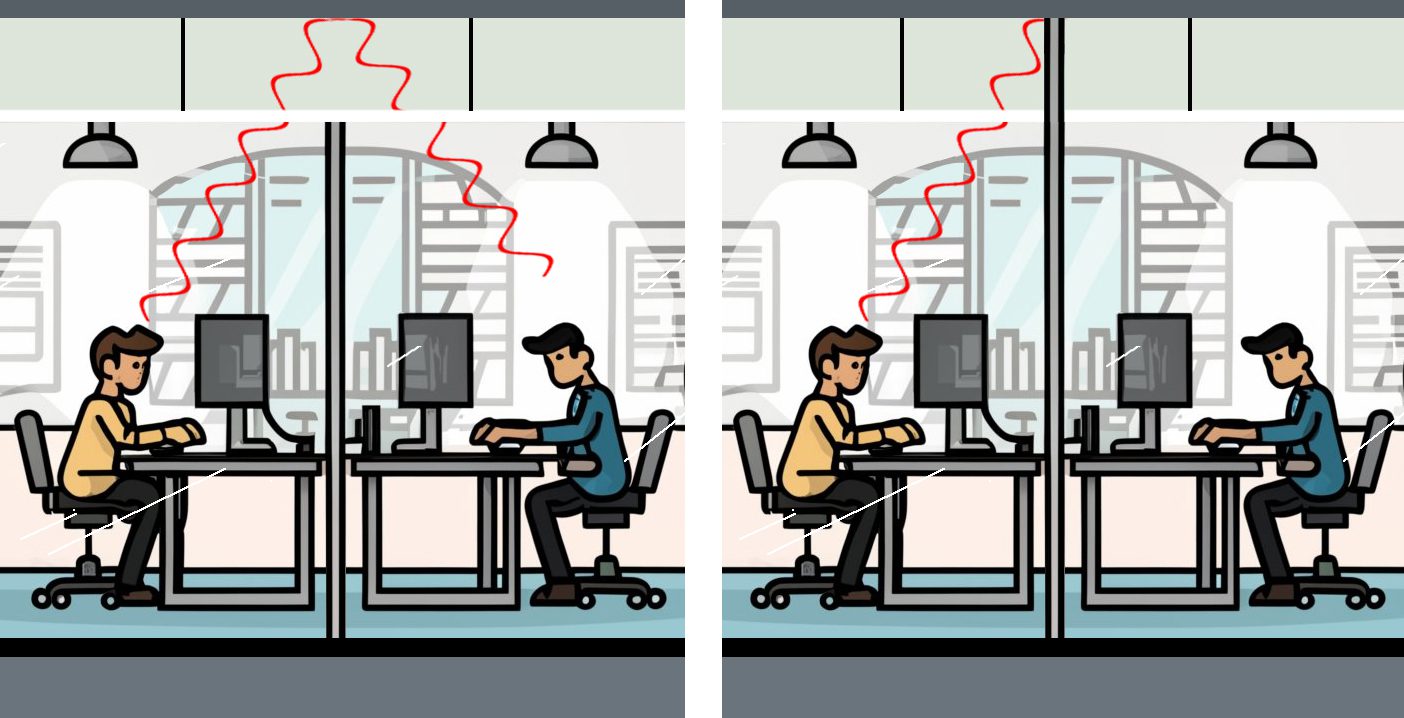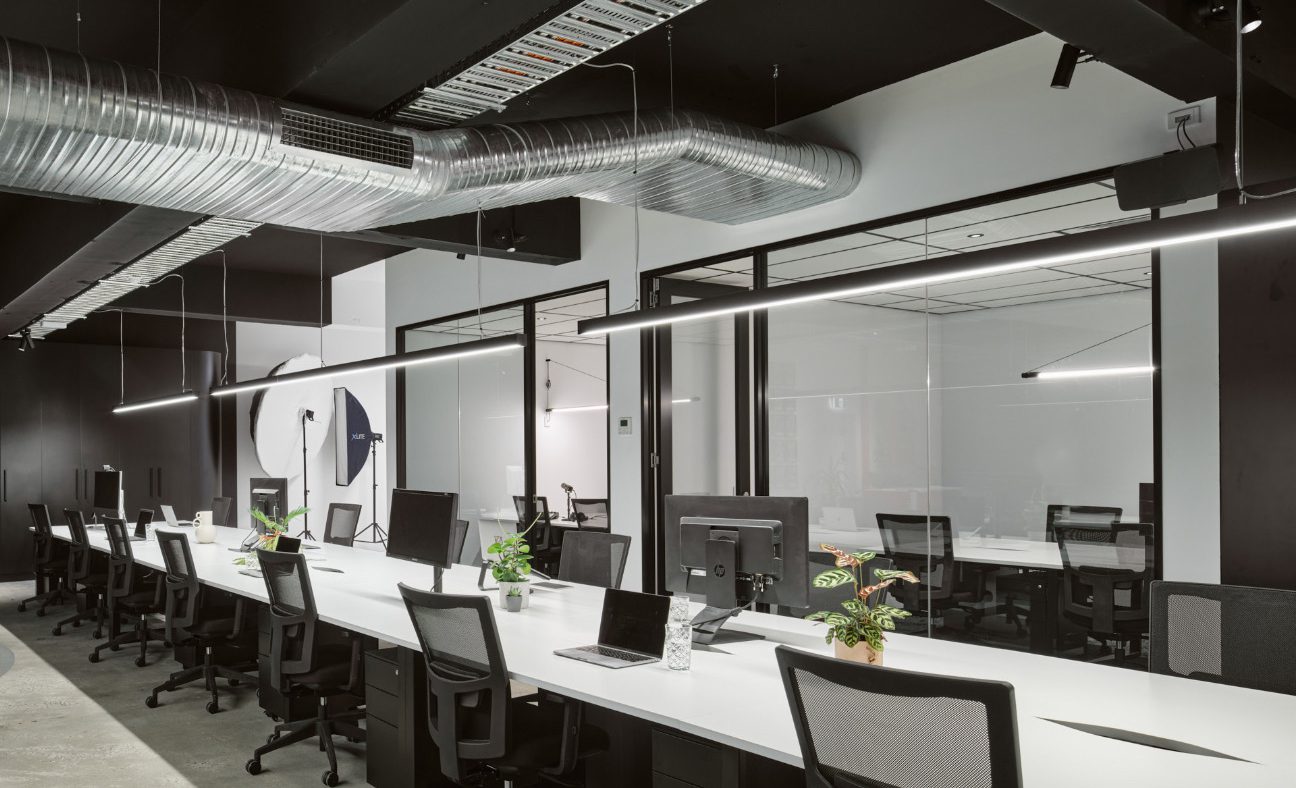How can I improve the speech privacy of my closed offices or boardrooms?

Welcome to another edition of Frequently Asked Questions about Noise, Vibration, and Acoustics. In this series, we answer the questions we hear most often from clients or through inquiries via our website. I’m Jessica Tinianov, a Senior Engineer and Associate at HGC Engineering. Today’s question is: Why is my private office or boardroom not so private?
What is Speech Privacy?
The first thing we need to establish is what is meant by “private” in the context of an office sound environment. Speech privacy is essentially not being able to hear conversations taking place within a space, such as an office or a boardroom, in surrounding areas, to varying degrees. There’s several different metrics that we can use to evaluate the degree of speech privacy, but we’re not going to address that aspect today. However, the important thing to understand is that, regardless of what metric you’re using, the amount of speech privacy that you require is going to vary depending on the space, location, and usage in question.
Establishing Speech Privacy Expectations
In some cases, being able to hear some audible, but muffled or unintelligible conversations might be completely fine. Like when you have a boardroom surrounded by open office cubicles, and your main goal is to limit boardroom conversations from distracting nearby cubicle workers. Whereas in other situations, like in a law office or a medical clinic, you may need to ensure the acoustic privacy such that any confidential personal information being discussed remains safely behind closed doors. Establishing speech privacy expectations and flagging potential acoustically incompatible adjacencies are some of the key reasons why it’s important to get an acoustic consultant involved as early as possible in the design process.
Finding and Mitigating Speech Transfer Paths to Outside a Space
Another reason to get an acoustical consultant involved early, at the design stage, is the cost and practical limitations of trying to identify and implement acoustic solutions after construction has been completed and office staff have moved in. Sometimes though, speech privacy concerns just get overlooked or missed. Sometimes, things in an office change. Maybe the use of a space changes and acoustical problems don’t present themselves until after the fact. An acoustical consultant can help identify likely speech transfer paths between spaces and propose mitigation remedies.
Factors that Contribute to a Lack of Office Speech Privacy
What are the key factors that we see time and time again, as acoustical consultants, that create unexpected speech privacy issues in an office or boardroom? Typically, there are three main components that we examine when we’re evaluating speech privacy.
-
The sound level at the source.
-
The sound path between the source and the receiver.
-
The background sound level at the receiver.
To improve speech privacy, one or more of these three factors typically requires consideration.
Determining the Paths Between Where a Sound is Made and Where the Sound is Heard
First, we need to look at the potential paths taken between the source of where a sound is made, and where the sound is heard by a receiver. Once the assessment is done and how do we then address any identified issues? One option is to implement noise barriers in a space. We can also look at adding absorptive and reflective materials to redirect the sound path away from potential receivers. We can also try to eliminate, or at least minimize, any sound leakage along flanking pathways between neighboring spaces.
When Ceilings are a Sound Transfer Path Between Spaces
One of the areas where sound leakage often occurs is via the ceiling. Often, the wall between two spaces stops at the underside of a suspended ceiling. It doesn’t go through to the floor or roof structure above it. This leaves an open cavity that’s common across the two spaces. Sound can literally break into the cavity above the ceiling, bypass the wall, no matter how good it is acoustically, and come across and down to another adjacent space.
In addition, suspended ceilings are often full of holes for lights, HVAC, return air grills, speakers, and other similar objects that require ceiling openings to fit into. Sometimes, ceiling tiles can be found that span across two spaces, with the drop ceiling tile and grid structure spanning over the common wall, leaving small gaps for noise to leak through. And a good rule of thumb for acoustics is: if light can pass through something, so can sound.

What can been done to address ceiling sound leakage? Well, we can extend the wall up, past the suspended ceiling to the underside of the structure above it, be it the roof, or the floor above, and break that common open path between spaces. If you are unable to extend the wall all the way up, at least try to go past the suspended ceiling partway up, somewhere between the ceiling and the floor or roof structure above it. Another thing we can do to improve speech privacy via this path without extending the wall is to upgrade the acoustic resilience of the suspended ceiling itself so that sound can’t get into or out of the cavity as easily, to bypass across the top of the wall.
Upgrading a Suspended Ceiling for Better Sound Mitigation
We achieve this several ways by:
-
Incorporating ceiling tiles with a higher Ceiling Attenuation Class (CAC) rating
-
Using drywall type ceiling tiles or a continuous drywall ceiling
-
Adding extra mass or insulation to the back of the suspended ceiling
There are other strategies that we can employ as well. One way is to address the sound leakage caused by holes in the ceiling created for things such as lights, HVAC, and air grilles as mentioned earlier. Ideally the holes be eliminated altogether (with backer boxes, etc.). If that is not possible or realistic, then they should be moved farther apart and away from each other. It’s also a good idea to add treatments on and around the openings (i.e. a lined return air boot) to better seal them acoustically.
When Walls are a Sound Transfer Path Between Spaces
What about the wall between adjacent spaces? While a wall in and of itself can have a really good acoustic performance value, we still need to address any potential sound paths that might be flanking or leaking around it. As such, we need to examine the perimeter of the wall: where the wall meets other walls; where it meets windows; where it meets the floor; and where it meets the ceiling, or the structure above it. All of these areas around the wall need to inspected for any potential acoustic weak points, that if identified, can then be addressed acoustically.

Just like with the drop ceiling, we also need to inspect all wall openings and the things that may be going through it, like pipes and common air ducts that might be open on both sides for sound to travel, or that might not be well-sealed around the passage point. We need to get in close and inspect any wall penetrations, guided by the notion mentioned earlier that anywhere light can go through, so can sound.
When Doors are a Sound Transfer Path Between Spaces
We also need to direct our focus on doors. The door is often a very weak point acoustically.
In fact, it’s always going to be weaker than a wall when it comes to sound leakage. But just like with ceilings and walls, there are things that we can do to limit door-related acoustic breakouts. It starts with investing in a well-insulated, solid core door. However, like with ceilings and walls, it’s important to acoustically assess not just what’s going through the door, but also whether sound is going around its perimeter. Are there any door seals? Do the door seals have any gaps that can create acoustic weak points? Are the seals properly adjusted or misaligned? Do the door seals have something hard to push against to engage them? Is the door frame acoustically well designed? Is there a threshold, or a hard floor for the door’s bottom seal to make contact with, effectively creating a solid acoustical barrier?

Incorporating Sound Masking Systems
One last consideration is deliberately adding some background noise into the spaces. It might seem counterintuitive, but sometimes we actually need to add sound to help to improve speech privacy. Of course, if we introduce too much added sound we could end up creating an additional noise problem. If you think about it, when your office surroundings are exceptionally quiet, you can quite literally hear a pin drop. In this case, any surrounding private conversations can more readily be heard and understood.

However, if we start to add in a multitude of sounds: like a printer running; a phone ringing, the whir of fans and HVAC systems running; or the voices of people who are engaged in friendly office banter while walking down the hallway, or sitting at their cubicles; suddenly conversations in closed offices become unintelligible when heard elsewhere. One way to introduce a constant, more reliable and customizable background sound, to achieve this same result, is to add a sound masking system in the office. Typically, these are placed on the receiver side. There are a number of different systems and options available to choose from, but sound masking considerations will be discussed in more detail in a future post.
Conclusion
So that’s our question for this edition of our FAQ series. I hope you learned a little bit about what can contribute to poor speech privacy and what kinds of things can be done to help. If you have any questions or any ideas for future videos, please reach out.




